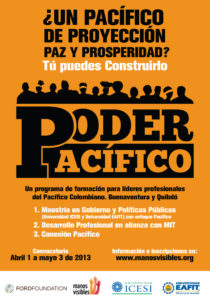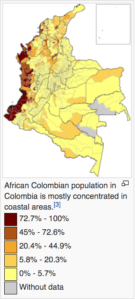Huma Gupta from the MIT School of Architecture and Alyssa Bryson from MIT CoLab presented their research at last week’s UEP Colloquium. Gupta, who worked on international aid infrastructure projects in Afghanistan, showcased Integrity Watch Afghanistan’s Community Monitoring Toolkit. The toolkit was developed in response to years of dwindling resources, corruption and a lack of accountability in USAID‘s foreign aid program. Increasing privatization of development, subcontracting labor, and a history of funds going to western agencies rather than local developers ultimately led to Hilary Clinton claiming that “USAID has been decimated.”
Gupta worked in 75 communities in 75 districts in northern Afghanistan to train and elect locals to go to development sites, talk to builders, and gather photos and documents. Monitors then gave monthly updates to the government to keep them up to speed on the state of affairs. The Community Monitoring web site was developed to allow other communities across Afghanistan and the rest of the world (the site is currently in Dari/Farsi and English) to mitigate the negative effects of international aid programs. Gupta emphasizes that this is a tool for mitigation, not a solution to lacking infrastructure or corruption. A structural fix would treat the cause rather than the symptoms.
Alyssa Bryson studied the Colombian Pacific, a geographically isolated area of the country with low human development levels, minimal government and a strong guerrilla presence. Extractive industries are prevalent in the region, which has the greatest population of Afro-Colombians and a large population of indigenous Colombians.
 International aid and development in the region has historically focused on big projects, in which profits flow to elsewhere in the country or across borders, rather than efforts to build local wealth. Bryson studied and assisted in the establishment of a network of local indigenous leaders who could advocate for greater inclusion in national initiatives and support local growth projects. The program, Manos Visibles (Visible Hands) is working with former guerrillas to transition to constructive work. They built a school of economics, a school of government, and funds for at-risk women and children.
International aid and development in the region has historically focused on big projects, in which profits flow to elsewhere in the country or across borders, rather than efforts to build local wealth. Bryson studied and assisted in the establishment of a network of local indigenous leaders who could advocate for greater inclusion in national initiatives and support local growth projects. The program, Manos Visibles (Visible Hands) is working with former guerrillas to transition to constructive work. They built a school of economics, a school of government, and funds for at-risk women and children.
Visit the MIT CoLab web site to learn more about their international projects.

